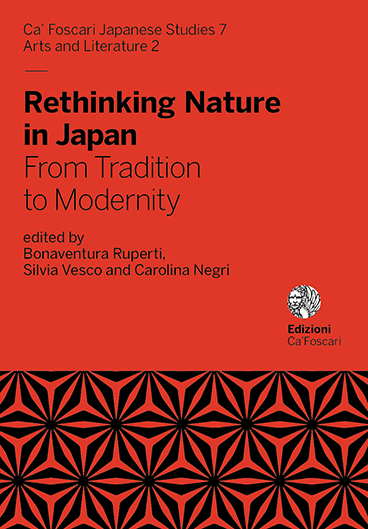- search 352 views
- file_download 24 download
- keyboard_capslock metadata
-
mark_email_readIscriviti alla newsletter
Nature as a Problematic Concept in Japanese Literacture
Looking for Reality
abstract
The outlines of modern Japanese literature were drawn in the 1880s; while strongly influenced by the literary concepts of the West, it also carried on the styles and concepts of premodern literature, creating a revolution in the regulated concept of ‘literature’ in all its aspects from form through content and story. An important part of this was the perspective on ‘nature.’ In his epochal essay on literature, The Quintessence of the Novel (published as 9 magazine volumes by Shogetsudo in 1885-86), which proved the beginning of modern Japanese literature in a detailed account covering both literary theory and literary methods, Tsubouchi Shoyo includes the now- famous passage “The pulse of the novel is human affection, to which setting and styles come second. What is human affection? Human passions, the failings to which humans are prone.” Here he argues that the main focus of the novel is to depict ‘human passions,’ as human affection. The issue here is also one of how to describe inner human motivations and awareness down to the last detail, and it is understood here that the concept arises that the fictional mechanism of the novel is able to depict human interior life. This is so-called realism; when we consider its division into the direction of descriptive writing and that of naturalism, the major issue of the awareness of ‘nature’ in Japanese literature arises. In the late Meiji period, that is around the year 1900, the form of literature moved toward “unifying the spoken and written language’, but a diverse variety of forms and expressions were being used. There was no consistent format of notation, idiom, even of punctuation or transliteration of characters. This is a significant issue in the study of Japanese literature. Conversely, one might say that at this period notation, storytelling, the depiction of styles and affections had just that much freedom. This strategic jumble is perhaps what gave rise to the fertile production of modern Japanese literataure. Eventually, as a result of all this, the ‘I-Novel’ came to be—it is said to be an original Japanese literary form—and went on to become a stranglehold on writers within the long literary tradition. The major innovations of the late Taisho period, including modernist literature such as the neo-sensualists and proletarian literature as well, also struggled within the grip of this bondage. The “proletarian realism” advocated by Kurahara Korehito was indeed a concept reflecting the issue of the awareness of ‘nature’ within Japanese literature. This presentation will present an overview of the grasp of the multifaceted concept of ‘nature’, discussing how ‘nature” has been approached in modern Japanese literature and what characteristics of Japanese literature it has formed.
Keywords: Realism • Japanese modern literature • Nature
permalink: http://doi.org/10.14277/6969-171-3/CFJS-7-4




